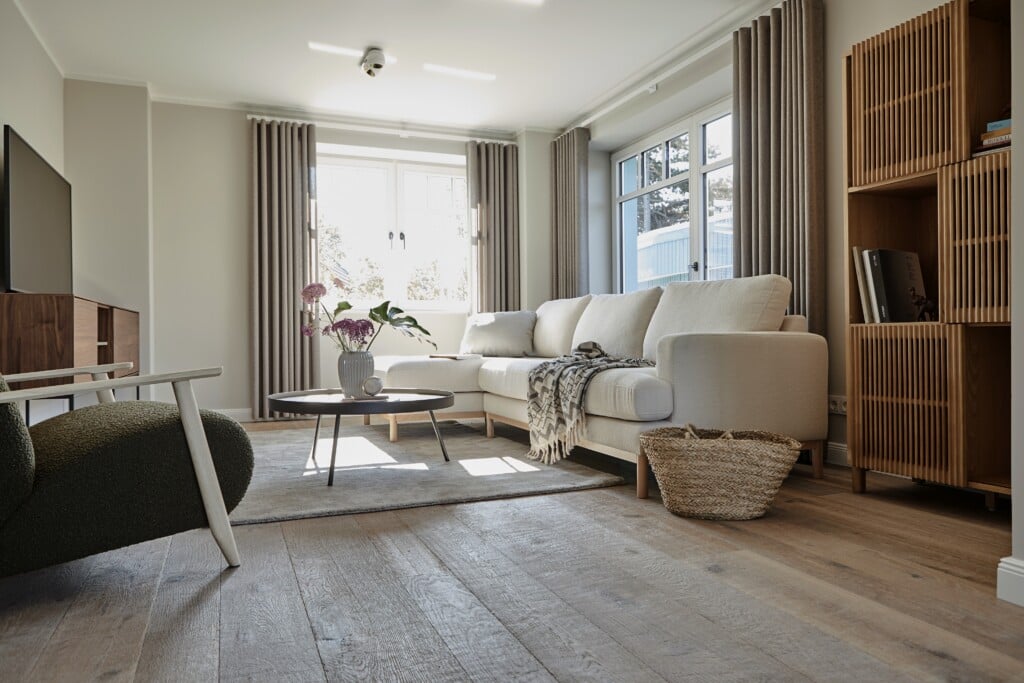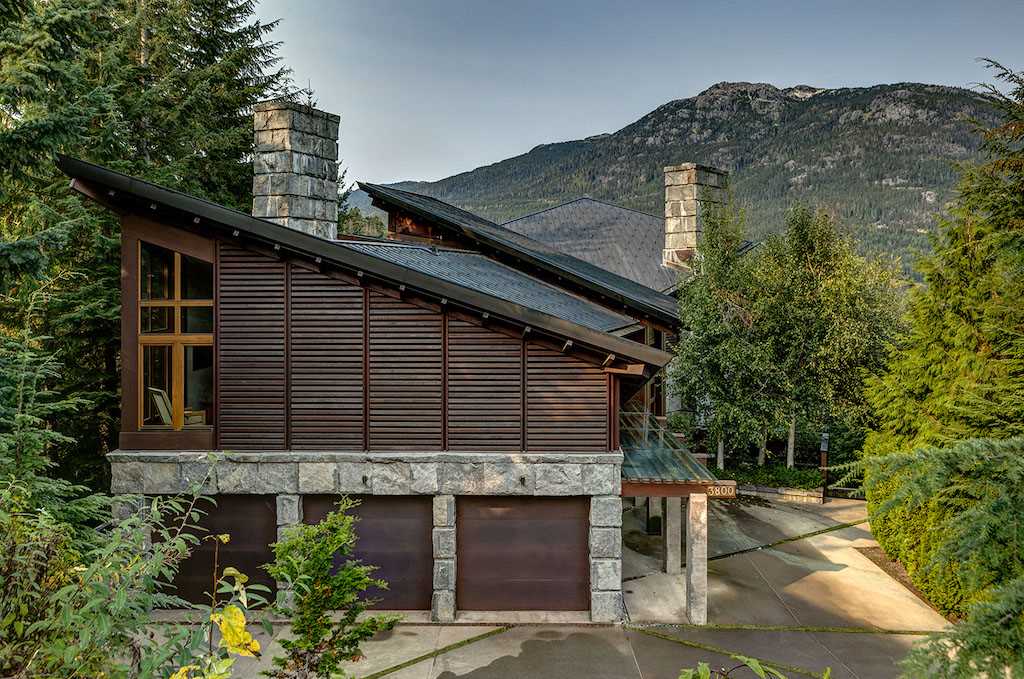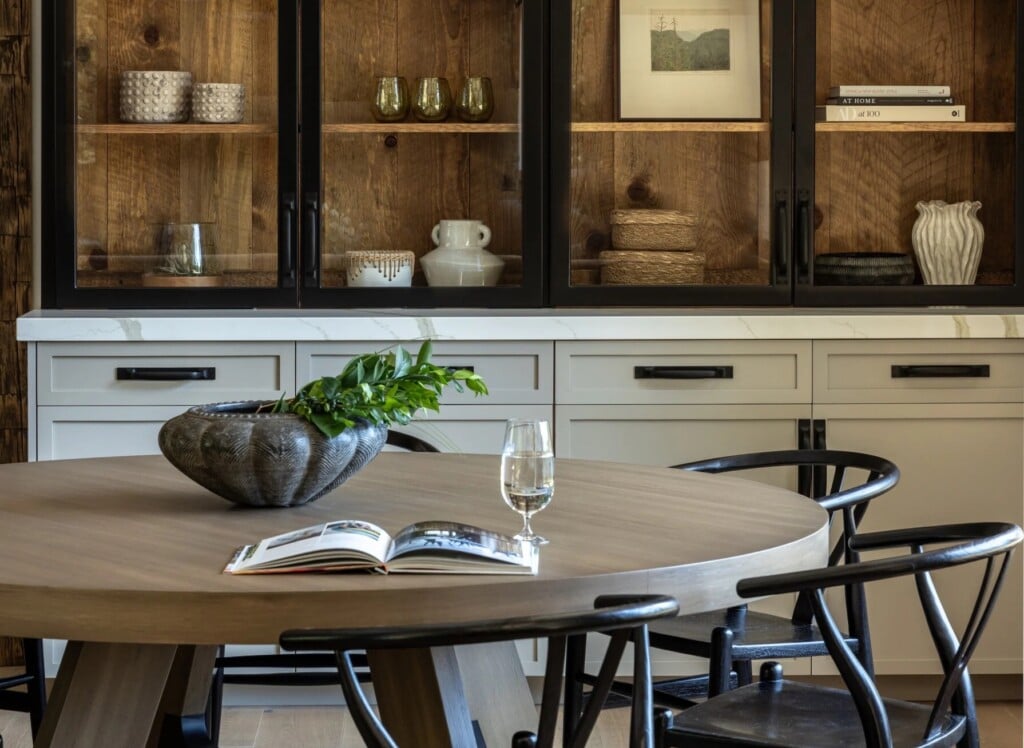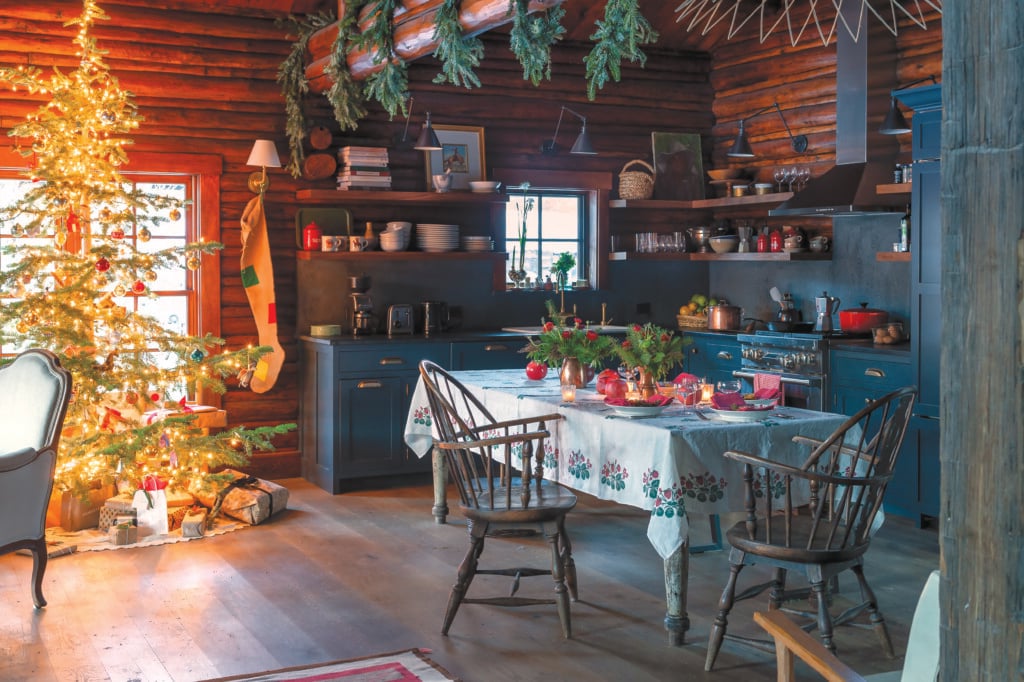How to Stain and Maintain a Log or Timber Home
An essential guide to enhancing the natural beauty of wood.
Log and timber homes celebrate the natural beauty of wood—it’s their signature feature and what draws many people to them in the first place. Yet, despite this shared foundation, there are a surprising number of styles within the log and timber home world. Much of that variety comes down to stain choices. Stains don’t just protect the wood—they enhance it, bring out its character, and allow homeowners to express their personal taste.
But what if your style evolves over time? The good news is you can change the color of your log or timber home stain, but it requires a thoughtful approach.
Homeowners often consider changing their stain color when their log or timber home begins to show signs of wear. A weathered appearance including faded wood, gray patches from sun exposure, bubbling stain, or even areas of rot can make a once-beautiful home look neglected. But maintaining curb appeal isn’t just about aesthetics; it’s a matter of performance.
When it Comes to Wood Stains, Appearance is Performance
Log and timber homes are often found in scenic mountain environments, and those breathtaking settings come with a price. Harsh UV exposure, wide-ranging temperature swings, and heavy moisture from snow, ice, or rain can all take a toll on the structure. These extreme conditions continuously test a home’s durability.
In this context, a colored stain does far more than enhance visual appeal, it becomes the wood’s first line of defense. The pigments in a tinted stain act as UV inhibitors and help shield the wood from the elements. Just as clothing protects skin from sunburn, stain protects wood from damage. But it’s important to note: not all pigmented stains are created equal.
Know Your Stain
Oil-based stains are attractive at first, but the oil eventually evaporates leaving a thin layer of powdery tint. These stains can also be environmentally toxic. Paint will hide the wood’s unique features, and any protection is short-lived. Under paint, wood can’t breathe and moisture gets trapped, leading to rot. Paint is also inflexible—when wood inevitably expands, contracts and shifts, micro-fissures will develop, giving water a place to seep in.
Waterborne stains adhere tightly to the wood and are both flexible and breathable. Naturally occurring moisture inside the wood can escape and the stain won’t crack. They are also semi-transparent, allowing the wood’s gorgeous swirls and personality to come through. Adding a clear topcoat in a satin or glossy finish deepens the stain’s beauty with a gorgeous luster. A waterborne system and topcoat makes maintenance a breeze so you can safeguard your home’s beauty and stay in love with your stain.
Changing Your Log Home’s Stain Color: What You Need to Know
If you’re looking to go darker than your current stain, you’re in luck! Applying a new coat right over the existing stain is possible. However, there are a few things to keep in mind. With a semi-transparent stain, some of the original color will show through. This can result in a unique and visually striking finish, but it also means that exact shade may be difficult to replicate in the future. You can, of course, continue with a new, darker tone moving forward. If you’re hoping to lighten the stain color, that’s a different far more involved story. To go from dark to light, you’ll need to return the wood to its natural, bare surface.
Stripping Down to Bare Wood: Your Options
Restoring your home to bare wood can be done in one of three ways: by sanding, media blasting, or chemical stripping.
- Sanding uses abrasive sandpaper to manually remove stain and surface coatings from the wood.
- Media blasting uses compressed air to propel abrasive materials such as crushed walnut shells, glass or plastic beads across the wood surface to strip off the old finish efficiently and evenly.
- Chemical stripping uses a water-based solvent that removes most types of oil and water-based finishes.
Whatever method you choose, once the stripping process is complete it’s crucial to rinse your home with a log wash to remove any remaining residue. This step ensures a clean, ready-to-stain surface.
Start Fresh, Finish Strong
With clean, bare wood, you have a fresh start. This is the ideal time to apply an odorless borate-glycol wood preservative, which offers long-term protection against fungi, mold, and insects. Then comes the fun part—choosing your new stain color. Stains come in a rich palette of colors, from soft grays and golden browns to deep red tones and warm cocoa hues. Whether you’re going for a bold new look or a timeless classic, there’s a color to match your vision.
Rick Webb is National Sales Director at Perma-Chink Systems, the largest manufacturer of log home chinking and sealants. For more information reach out to info@permachink.com or call 1-800-548-3554.
Content for this article provided by Perma-Chink Systems, Inc.













